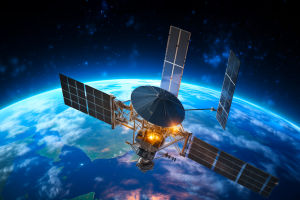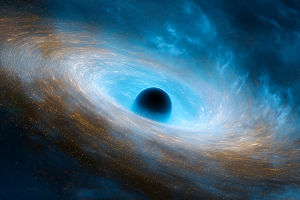Hello Lykkers, imagine a colossal, unseen bubble wrapping around Earth, deflecting torrents of charged particles hurtling from the Sun. This magnetosphere, stretching tens of thousands of kilometers into space, forms our planet’s first line of defense against solar wind.
Without it, solar particles would take away the atmosphere’s protective layers, leaving the surface exposed to intense radiation. The magnetosphere’s ever‑changing shape, compressed on the Sun‑facing side and trailing into a long magnetic tail, highlights its dynamic struggle against space weather.
Dual Poles
Earth boasts two pole systems: geographic and magnetic. The Geographic North and South Poles mark where longitude lines converge—at the Arctic Ocean’s center and Antarctica’s frozen expanse.
The Magnetic North Pole currently drifts across Canada’s Ellesmere Island, some 500 km away from true north. Compasses align with this magnetic dip pole, not geographic north, because their needle’s north‑seeking end is actually drawn toward what scientists label a south magnetic pole near the Arctic.
Field Generation
Deep beneath the crust, Earth’s liquid outer core of molten iron and nickel churns under immense heat. The geodynamo process requires four ingredients: rapid planetary rotation, an electrically conducting fluid, vigorous convection currents and a heat source to drive them. These conditions combine to convert thermal energy into electrical currents, which in turn generate magnetic fields. As these self‑sustaining loops of magnetism interact, they give rise to the vast geomagnetic field enveloping our world.
Core Dynamo
Convection in the outer core occurs because inner core heat drives hotter, buoyant fluid upward, while cooler fluid descends. This motion, combined with Earth’s 24‑hour spin, twists and stretches the magnetic field lines into complex patterns. Each ring of current strengthens the overall field in a positive feedback loop: currents produce fields that induce new currents, maintaining the magnetosphere over geological timescales.
Shielding Role
Charged particles ejected by the Sun—electrons and protons in the solar wind—would bombard the atmosphere relentlessly without the magnetic shield. The magnetosphere deflects most particles around the planet and traps many in doughnut‑shaped Van Allen radiation belts.
These belts swell during solar storms, but generally keep harmful radiation away from the surface. Cosmic rays, high‑energy nuclei from distant supernovae, are also diverted, preserving DNA integrity and protecting biological systems from mutation.
Storm Disturbances
Strong solar eruptions, like coronal mass ejections (CMEs), can weaken parts of the magnetosphere, causing geomagnetic storms. A famous example was the 1859 Carrington Event, which caused bright auroras as far south as the Caribbean and damaged telegraph systems in Europe and the US.
In 1989, a powerful CME caused a blackout in parts of Quebec, Canada, knocking out the power grid for 12 hours. When a CME’s magnetic field opposes Earth’s, magnetic reconnection opens a path, letting energetic particles fall into the upper atmosphere.
Auroral Show
When geomagnetic storms push ions toward the poles, they collide with oxygen and nitrogen in the atmosphere. This produces beautiful lights—green, pink, and violet—known as the aurora borealis in the north and aurora australis in the south. These lights dance across the sky at altitudes between 80 and 640 km, showing how the magnetosphere turns dangerous solar energy into stunning natural displays.
Pole Drift
Earth’s magnetic poles move unpredictably, mainly because of changes in the core. Since James Clark Ross first found the Magnetic North Pole in 1831, it has moved about 40 km a year toward Siberia. Over thousands of years, the magnetic field can even reverse—north and south poles swap places.
These reversals happen irregularly, on average every 200,000 to 300,000 years, though the last one was 790,000 years ago. Scientists use satellites and ground stations to track this movement closely to ensure navigation stays accurate.
Other Worlds
Earth is not alone in hosting a magnetic field. Jupiter’s massive dynamo produces a magnetosphere extending millions of kilometers, while Saturn, Uranus and Neptune also exhibit powerful fields. Mars, lacking a molten core, lost its magnetosphere long ago, leaving its atmosphere vulnerable and barren.
Venus, although possessing a liquid interior, rotates too slowly to sustain a geodynamo. Comparing planetary fields sheds light on habitability factors and guides the search for life beyond Earth.
Conclusion
Our planet’s invisible magnetic shield stands as a testament to Earth’s inner dynamo and its pivotal role in shielding life from cosmic hazards. From guiding compasses to painting polar skies, the geomagnetic field influences navigation, climate studies and space exploration.
Observing its periodic reversals and daily fluctuations connects humanity to deep‑earth processes and stellar tempests alike. Will atmospheric erosion ever threaten our air? How will next century’s pole drift reshape navigation? Keep eyes and instruments on the sky—Earth’s magnetic saga continues.


